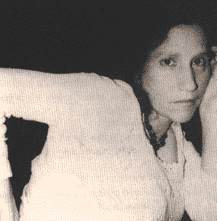a review of
Diane di Prima, Revolutionary Letters
San Francisco: Last Gasp, 2007.
160 pages, available for $15 from the Barn

Diane di Prima, America’s (and probably the world’s) leading anarcho-Hermetic poet, has issued a new edition (the fifth) of her famous Revolutionary Letters, containing all of the poems from the City Lights versions from 1971 through 1980, plus 23 new and more recent pieces. This new edition emanates–rather oddly but not inappropriately– from Last Gasp, a publisher mostly known for underground comics.
Although I’m nostalgic as can be about Flower Power and the Sixties Revolution That Failed, I have to admit that not very much great literature arose from the Events of and around 1968. After all, it was a mass uprising, not an elitist Art Movement. The best stuff was largely supplied by our Elders the Beats. In this respect, Revolutionary Letters is a major literary work of that era.
We learn from the first poem that Diane’s unique blend of anarchism and Hermeticism was adopted or adapted from her beloved grandfather, an Italian worker who admired both Giordano Bruno (the great Renaissance magician and martyr to Free Thought) and Carlo Tresca, Sacco and Vanzetti, and Dante. Up to about Letter #30, the poems breathe an April air of pure hippy utopianism and unbounded optimism, which was the mood du jour for all of us.
When you seize Columbia (University), when you
seize Paris, take
the media, tell the people …
Not if, but when. Then comes Letter #30, “To Those Who Sold the Revolution Summer of ’68” and the beginning of a tougher and less fizzy attitude–not “revolutionary pessimism” because Diane is no quitter–but a darker mood. In Letter 32, she realizes
not western civilization, but civilization itself
is the disease which is eating us.
Now the hot revolutionary rhetoric of the earliest poems is tempered more and more by the complexities of Hermetic thought, but only to grow even angrier and more intransigent–a call for
a flying leapto another ‘plane’ or ‘sphere’
& I don’t know into what, don’t ask, only
I know it won’t be worse.
(#71)
Making the link between, say, Emma Goldman and Paracelsus, is itself an alchemical operation, and a question already posed by Surrealism, although Revolutionary Letters shows little direct influence from the latter. Olson and Duncan and Pound are the models. But the earliest poems were shouted in the street at Digger demos, and the book is dedicated to Dylan (and her grandfather); it is a profoundly American book, turning high erudition into native song, evoking the iconic American Indian, the IWW, the Summer of Love.
Back when there were mimeograph machines, Diane wrote that the best thing to do with one would be to drop it off a five story building on a cop’s head. Some of these poems still have that kind of impact: almost a poem as bomb. But more than that (or parallel to it), they also chronicle the political heart of a great poet whose alchemical recipes for revolution attain the timelessness of a Whitman or Ginsberg: the political as personal. Letter #89, “Independence Day 2002” (and thus one of the most recent) reads in its entirety thus:
bald eagle
making a come-back
so am I
